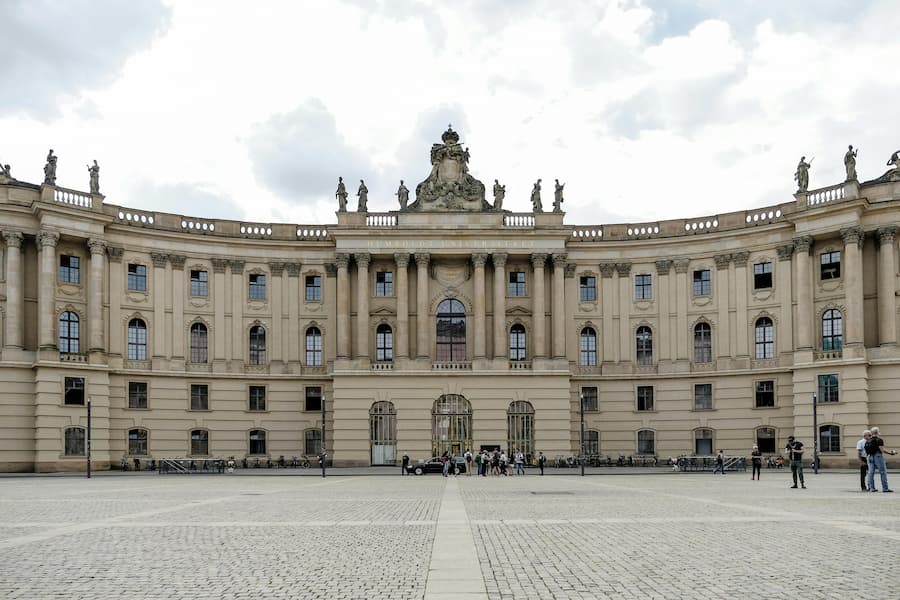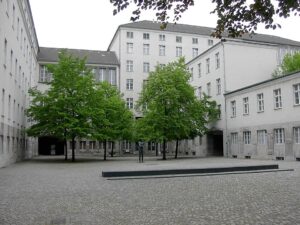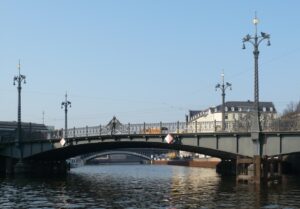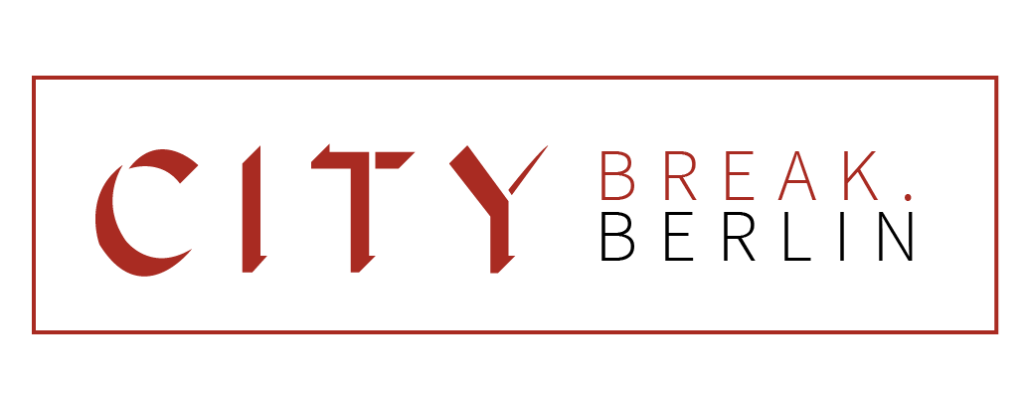Exploring Berlin’s Scientific Heritage.
When you say the word «Berlin» to someone and then ask what the word brings to mind, the most common knee-jerk reaction you’re likely to get is Hitler, Nazis, or war. Others might come out with Communism, Kennedy’s «Ich bin ein Berliner» speech or the famous Wall. A few might even mention cabaret clubs or the Kaiser. In other words, Berlin tends to evoke political or military events. And yet…
…when you step onto the streets of Berlin, you’re also walking in the footsteps taken by some of history’s greatest scientific minds. Albert Einstein developed his theory of relativity here. Max Planck revolutionized physics with quantum theory in the German capital. The pioneering nuclear scientists Otto Hahn and Lise Meitner made discoveries that changed our world forever. Berlin, in other words, deserves to also be widely known as a city of science and discovery.
So let’s explore the places where these brilliant thinkers lived, worked, and gathered. You can visit some of these places on your trip, to balance out the «dictatorships and divisions» lens and give you a deeper appreciation of the city.
Max Planck: The Father of Quantum Theory
Max Planck, who gave birth to quantum theory and transformed our understanding of physics, called Berlin his scientific home for decades. In 1889, he began teaching at Friedrich Wilhelm University (now Humboldt University), where he introduced his groundbreaking quantum hypothesis. Today, you can walk through the same historic university halls where this scientific revolution began, imagining the lectures that forever changed how we view the physical world. You can view a plaque dedicated to Planck on the outside walls of the main building too.
Albert Einstein: Revolutionizing Physics
When Albert Einstein arrived in Berlin in 1914 to take up his position as a professor at the Prussian Academy of Sciences, little did the city know it would host the development of his general theory of relativity. During his Berlin years, Einstein worked on this theory that fundamentally changed our understanding of space, time, and gravity.
As a special treat, for the truly dedicated, you can see where the genius lived. Head to the Bavarian Quarter in the Schöneberg district. While Einstein’s original apartment building at Haberlandstraße 5 no longer stands, a commemorative plaque marks the spot where one of history’s greatest minds once made his home. It is unvisited by tourists and a very atmospheric neighborhood.
While you’re in the area, notice the little signs in German hanging on the lampposts under the light itself. The bulk of these are quotes from the Nazi’s repressive Nuremburg laws. These signs are a sort of art installation, designed to evoke consideration of all that was lost when the fascists came to power, including Einstein himself, who fled the country. Many Jewish people lived in this quarter, and a good many artistic and scientific minds called this place home before 1933. In nearby Prager Platz, almost entirely rebuilt though it is, once played host to a plethora of Russian émigré writers in the years after the First World War.
Otto Hahn and Lise Meitner: Pioneers of Nuclear Chemistry
One of science’s most remarkable partnerships unfolded at the Kaiser Wilhelm Institute for Chemistry in Berlin’s Dahlem district. Here, Otto Hahn and Lise Meitner worked side by side, discovering nuclear isomerism and, most significantly, nuclear fission—the process later harnessed for both energy production and atomic weapons.
Today, you can explore this scientific legacy at the former institute, now part of the Free University of Berlin. Don’t miss the Hahn-Meitner Building, named in honor of their groundbreaking work. For a deeper dive into the area’s rich scientific history, join one of the guided tours offered by the Max Planck Society through the Dahlem district.
Harnack House: A Hub of Intellectual Exchange
In the heart of the Dahlem district stands Harnack House, a true crossroads of brilliant minds. Established in 1929, this meeting place regularly welcomed Einstein, Planck, and countless other luminaries for lectures and spirited discussions. The collaborative environment fostered here helped spark the innovations that shaped modern science.
Today, Harnack House continues as a conference center with its historical character carefully preserved. Visiting gives you a genuine feel for the setting where some of the 20th century’s greatest scientific conversations took place. As always in Berlin, it also offers the chance to reflect on the consequences which ensue when repressive crusading political regimes take power.

Humboldt University: A Nexus of Scientific Thought
No exploration of Berlin’s scientific heritage would be complete without visiting Humboldt University. Beyond hosting pioneers like Planck and Einstein, this prestigious institution has been home to numerous Nobel laureates and has significantly advanced many scientific fields.
When you visit the main building on Unter den Linden boulevard, make sure to see the «Lise Meitner Monument,» a bronze statue honoring her extraordinary contributions to physics.
The Institute for Sexual Research: Pioneering Sexual Science
The groundbreaking Institute for Sexual Research (Institut für Sexualwissenschaft), founded in 1919 by Dr. Magnus Hirschfeld, was the world’s first institute dedicated to the scientific study of human sexuality and gender diversity.
Located in the Tiergarten district at In den Zelten 10, the institute conducted pioneering research, housed an extensive library and archive, provided educational services, and offered some of the first medical services for transgender individuals. Hirschfeld, himself gay and Jewish, advocated for homosexual rights decades before such advocacy became mainstream.
On May 6, 1933, Nazi student groups targeted the institute in one of their first major acts of destruction. They looted its archives and burned thousands of books and photographs from its extensive collection in the infamous Nazi book burnings.
Today, the original building no longer exists. However, you can visit the site where it once stood near the northeastern edge of the Tiergarten park. A memorial plaque at the location (near the corner of Beethovenstraße and John-Foster-Dulles-Allee) commemorates Hirschfeld and the institute’s important work. The nearby Spree River is where many of the institute’s artifacts were thrown after the raid.
For those interested in Hirschfeld’s legacy, the Magnus Hirschfeld Society occasionally organizes walking tours of relevant sites, and the Federal Anti-Discrimination Agency has created a Magnus Hirschfeld educational tour as part of its work to combat discrimination.
Cafés and Salons: The Social Fabric of Scientific Discourse
In early 20th century Berlin, cafés weren’t just places for refreshment—they were intellectual hotspots where ideas transformed the world. Scientists, artists, and writers gathered at establishments like Café Central and Romanisches Café to debate, collaborate, and inspire one another.
While many of these original cafés no longer exist, their spirit lives on in Berlin’s vibrant café culture. Several venues maintain the elegant, intellectual atmosphere of the 1920s, offering visitors a taste of the environment where groundbreaking scientific ideas once percolated alongside cups of coffee. No matter where you go, you can take a coffee or tea break and reflect on the fact that you’re participating in a great unsung Berlin scientific tradition – exchanging views over a hot drink.
Berlin has all too often been a byword for militarism and extremism of one sort or another, so take this opportunity to explore the German capital from this other view point, and leave thrilled at the discoveries this city has witnessed in the pursuit of knowledge and progress.





